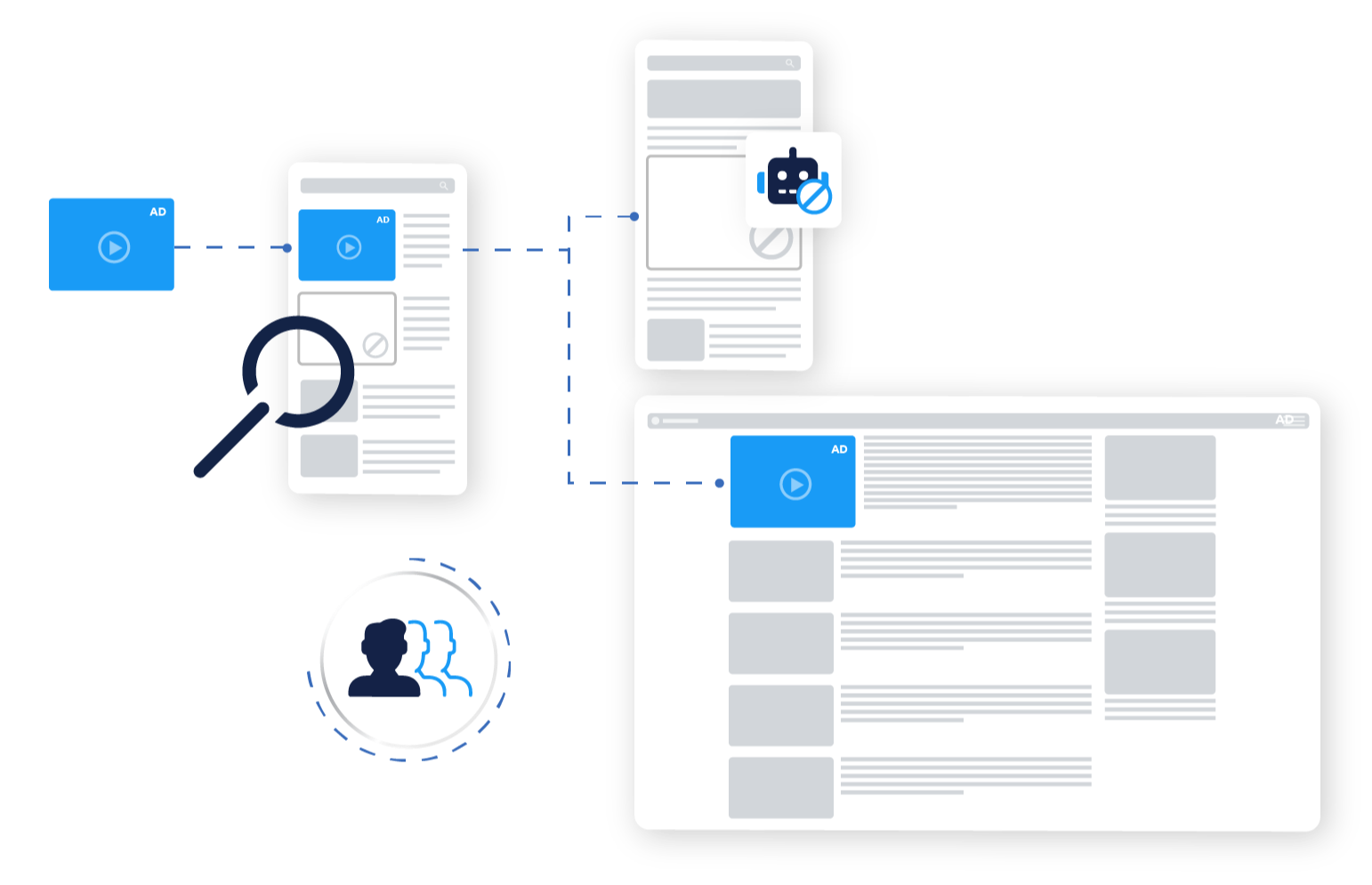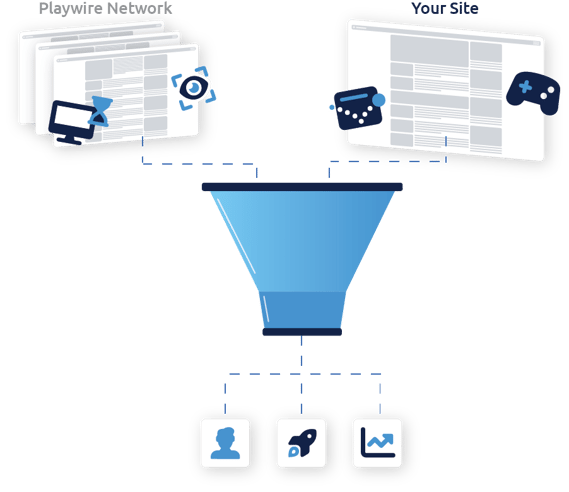How to Use Google Ad Manager Audience Segments
January 5, 2023
Editorial Policy
All of our content is generated by subject matter experts with years of ad tech experience and structured by writers and educators for ease of use and digestibility. Learn more about our rigorous interview, content production and review process here.

Key Points
- Google Ad Manager (GAM) audience segments are custom audiences used to target ad campaigns to people for whom they’re relevant.
- The process of creating an audience segment is simple, but mastering audience segmentation is a bigger challenge.
- If GAM’s audience segmenting and other features aren’t meeting your needs, it might be time to consider an end-to-end ad tech solution.
When it comes to advertising, the audience is everything. Delivering the right ads to the right audience can mean the difference between an ad campaign that’s worth the money and one that amounts to burning money.
One of the most established, effective, and widely-used audience segment tools is the one offered through Google Ad Manager. Here’s our guide for using GAM to create audience segments of your own.
-- Article Continues Below --
 Browse the Google Ad Manager Training Library!
Browse the Google Ad Manager Training Library!
What Are Google Ad Manager Audience Segments?
Google Ad Manager audience segments provide publishers and developers with the ability to create custom audience segments in order to better reach their target audience through targeted ad campaigns. Through this feature, publishers can identify specific types of users on their website or app and serve ads tailored to that segment.

Getting Started with Google Ad Manager Audience Segments
We’ll dive into the advanced info and best practices for Google Ad Manager audience segments later. For now, let’s start with the basics. Here’s a step-by-step guide for setting up your very first GAM audience segment.
- Sign in to Google Ad Manager (we told you we were starting with the basics).
- Navigate to Inventory, then Audience, then New Audience Segment.
- Name your custom segment with a descriptive name, which will help you identify it more easily among all your other segments.
- Click on Inventory (it’s next to “Behavior”) to target the segments to specific ad units or placements.
- Determine and enter the number of page views a visitor to your website or app must accumulate before they’ll be added to your segment. To be added immediately, set a value of 1.
- Under Recency, enter how many days an audience member has to meet the above page view count. For example, if you enter a page view number of 3 and a Recency number of 5, it means that anyone who visits a page three times in five days or less will be added to this new audience segment.
- Under Membership Expiration, enter the number of days a visitor will remain a member of this segment before being removed for not hitting the set page view minimum.
- You’re ready to click Save or Save and Populate. Congrats, you’ve made an audience segment with Google Ad Manager!
What You Should Know About Creating Audience Segments
Okay, we’ve covered the basics. But what else do you need to know about creating audience segments with Google Ad Manager?
Let's start with the limitations of these segments.
Limitations
For one, remember that the time between you creating a segment and Google starting to accrue impressions with that segment can be several hours.
Google also places limitations on segments with over one million viewers. In order to meet performance goals, their systems will require these audience segments to meet a certain number of impressions in proportion to their size in order to be fully viable.
Here’s the example Google provides in their support documentation:
- A segment with two million visitors is projected to contribute only a hundred impressions per day.
- The segment serves a small percentage of randomly selected members until sampling indicates it will cross a threshold of around 600 impressions per day.
Now enough about limitations. Let’s talk advanced capabilities of GAM.
Advanced Capabilities
With Google Ad Manager, you have the power to create some pretty advanced audience segments based on your specific needs. For instance, publishers can use “lookalike” targeting to find users who are similar to existing customers or website visitors.
They can also use exclusion lists to exclude certain types of users from seeing their ads, such as people who have already interacted with the brand or those that belong to certain geographic regions.
Two Types of Google Ad Manager Audience Segments
When it comes to creating audience segments, understanding the difference between user targeting and contextual targeting in Google Ad Manager can be key.
User targeting involves focusing advertisements on a specific group of users based on their demographics or interests. Contextual targeting focuses on the placement of ads rather than the people who will see them. In other words, it is about placing ads in environments that are relevant to the message being communicated.
User targeting is best when advertisers want to target a specific demographic with their messages, such as young adults or stay-at-home moms. On the other hand, contextual targeting is more effective for generating brand awareness since it places ads within relevant content that viewers are already viewing, such as sports pages or news sites.
-- Article Continues Below --
The Publisher's Guide to Google Ad Manager and GAM 360
Best Practices for Google Ad Manager Audience Segments
Want to make GAM audience segments work for you? Follow these three best practices courtesy of our experts at Playwire.
Start with a Strong Foundation
Google can do a whole lot with what you tell it about your audience, but it can’t tell you much about your audience that you don’t already know. The upshot is that you should only expect to get out of GAM audience segments what you’re able to put into them when it comes to audience data.
With that in mind, it’s important to get to know who your audience is before you create a segment — because Google won’t do it for you.
Go Deeper
Before creating your segment, take some time to develop a “picture” of what your audience looks like. If you’re a web-based gaming publisher, go deeper than “gamers” as an audience segment for your site. What types of games do they prefer? What other activities are they interested in? Why do they come to your website specifically?
If you can’t answer these questions before creating a GAM audience, you may be better off working with a third-party ad tech solution like Playwire.
Expand Your Sources
An end-to-end ad tech partner like Playwire goes beyond Google Ad Manager as a data source, empowering you to pull from a range of sources and create audience segments that are more granular and detailed than you ever thought possible.
This type of audience segmentation is essential for publishers bumping against the limitations of using a single platform like GAM and accessing the most possible ad revenue.
Is Google Ad Manager Enough for You?
We use a checklist of warning signs to help publishers know whether Google Ad Manager audience segmentation and other features are enough to suit their needs, or whether it’s time to go beyond GAM with a third-party partner.
If any of these statements apply to you, it might be time for an upgrade:
You’re spending too much time managing campaigns
Managing audience segments and ad campaigns through GAM can be extremely time-consuming. If you want to free up your valuable time for doing what you do best, creating great content, it’s time to work with an ad tech partner who can give you the most possible revenue with the lowest possible time commitment.
You’ve hit the knowledge barrier for segmenting and ad serving
We mentioned how Google Ad Manager’s audience segments are only as powerful as the data you bring to them. If you want to start bringing a lot more data to your campaigns, a partner like Playwire can help.
You want access to more demand sources
Playwire gives you access to more than just Google’s single demand source, including Amazon TAM, more than 20 unique SSP integrations, 14+ app mediation partners, and even our own direct sales team.

Playwire: The Google Ad Manager…Manager
When it comes to finding a reliable and comprehensive ad tech partner, Playwire is the best choice. With an array of features designed to help publishers and app developers maximize ad revenue, optimize ad performance and gain deeper insights into campaigns across all devices, we make it easy to succeed in the ever-changing ad tech landscape.
Whether you’re a die-hard GAM believer or you want to expand your audience segmentation capabilities and access to more demand sources, we’re here for you.
Contact us today to find out more.

-1.png?width=800&height=157&name=1-playwire-logo-primary-2021%20(1)-1.png)




